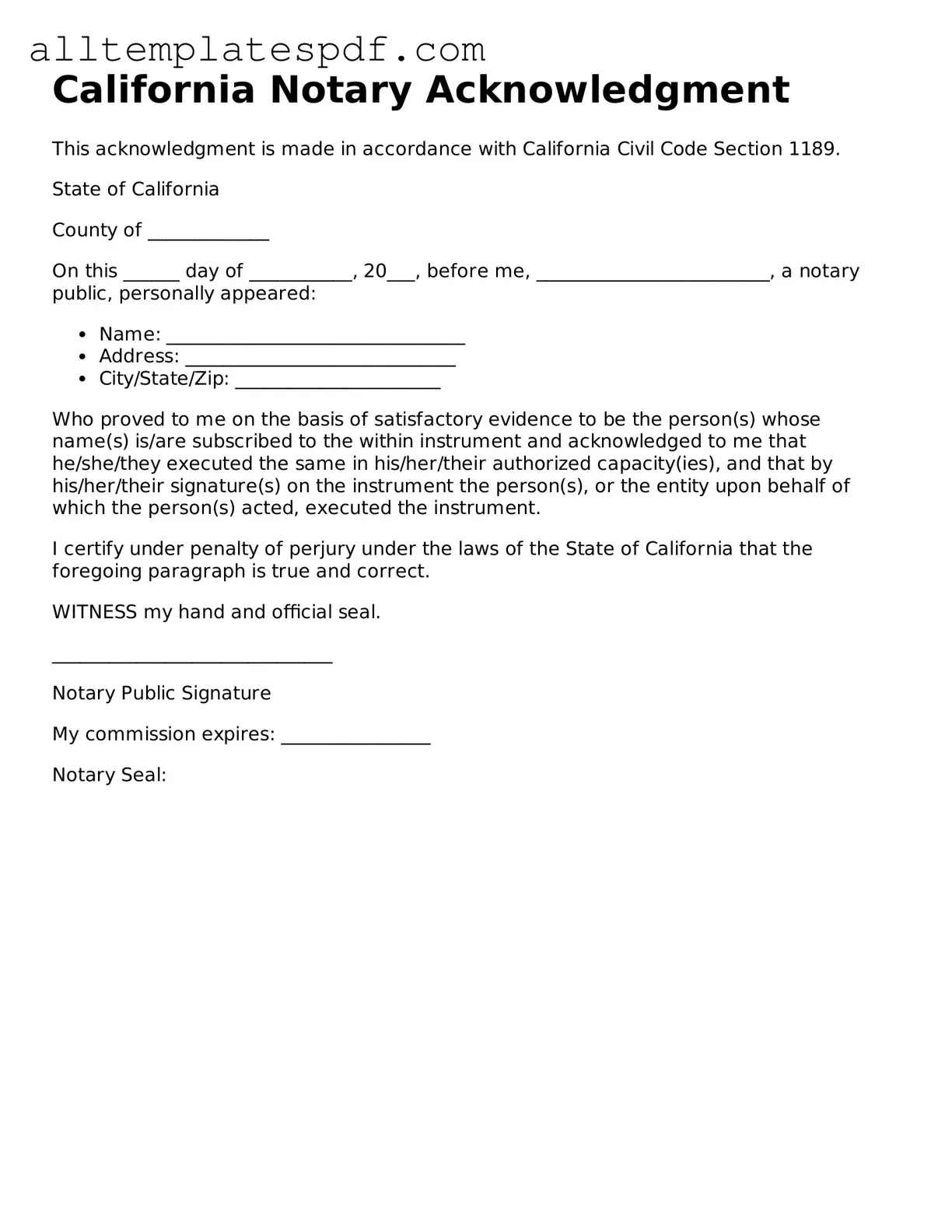Filling out the California Notary Acknowledgment form may seem straightforward, but many people trip up along the way. One common mistake is forgetting to include the date of the acknowledgment. This date is crucial because it establishes when the notary performed the acknowledgment. Without it, the document may be considered incomplete.
Another frequent error involves the signer’s name. It’s essential to ensure that the name matches the identification provided. If there’s a discrepancy between the name on the ID and the name written on the form, the notary may refuse to acknowledge the signature. This can lead to delays and additional complications.
People often overlook the requirement for the signer to be present during the acknowledgment process. A notary cannot acknowledge a signature if the signer is not physically present. This rule exists to prevent fraud and ensure that the person signing is indeed the one who claims to be.
Additionally, some individuals fail to provide the correct type of identification. California law specifies acceptable forms of ID, such as a driver’s license or a passport. Using an invalid or expired ID can lead to the acknowledgment being rejected.
Another mistake is not properly completing the notary’s section. The notary must fill out their information accurately, including their name, title, and commission number. Omitting any of this information can render the acknowledgment invalid.
People sometimes neglect to check for additional requirements specific to the document being notarized. Certain documents may have unique stipulations that must be followed. Ignoring these can result in a legally ineffective acknowledgment.
Moreover, some individuals might forget to sign the acknowledgment form. While it may seem obvious, it’s a critical step. Without the signer’s signature, the acknowledgment lacks validity.
Another common oversight is not using black or blue ink when filling out the form. California guidelines typically require these colors for official documents. Using a different color can lead to confusion or rejection of the form.
Finally, many people fail to keep a copy of the completed acknowledgment. Retaining a copy is wise for record-keeping and can be invaluable if any disputes arise later. Neglecting this step can leave individuals without proof of the acknowledgment.
